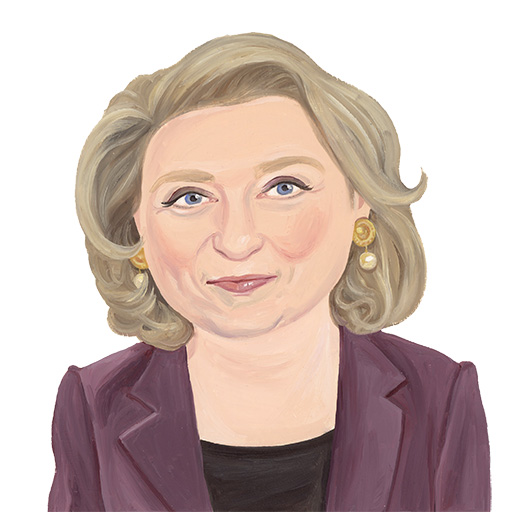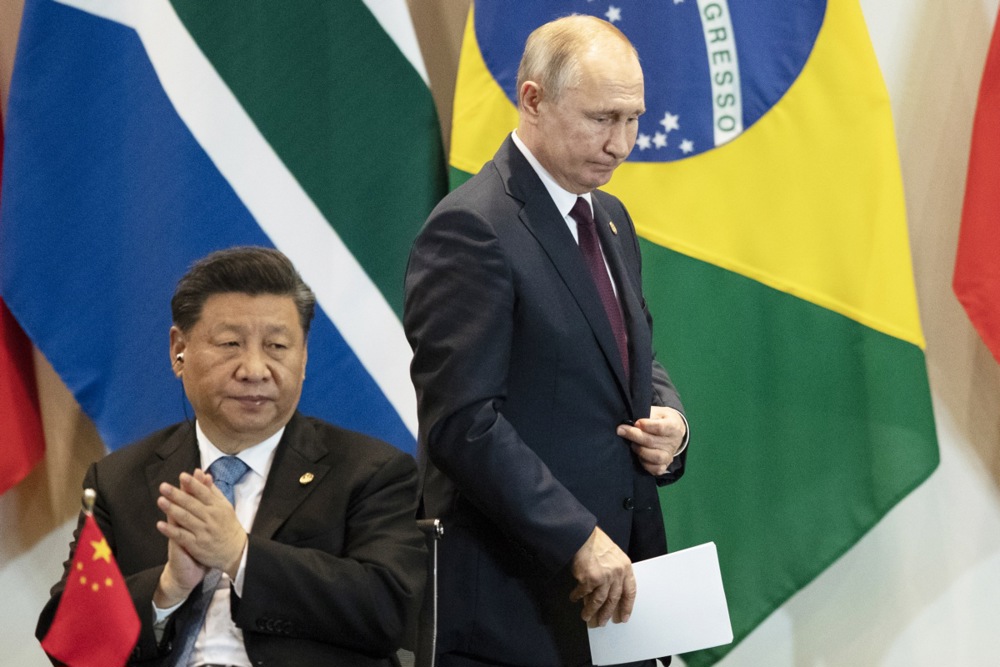This week’s 15th BRICS summit, which will be held in Johannesburg from Tuesday to Thursday, is billing itself as an international game-changer. South Africa’s President Cyril Ramaphosa, who as host is also Chair of BRICS for 2023, is full of ambitious plans.
This includes swelling the ranks of what started in 2001 as the simple denomination for the four (then) fastest-growing emerging economies — Brazil, Russia, India and China, to which South Africa was added ten years later — in order to leverage their weight and political influence into powering up the “multipolar world”.
If you read “multipolar” as “anti-West”, or even, at its most benign, “West-weakening”, you won’t be far wrong. In turn bombastic and accusatory, the discourse favoured by quite a few of the BRICS’s statesmen aims at guilt-tripping First World countries from the US to the EU, Japan, Australia etc.
Even without the 23 additional countries President Ramaphosa has mentioned as “willing to join the alliance”, or merely “interested”, the BRICS Five account for over 42 per cent of the world’s population, 23 per cent of the world’s GDP, and 18 per cent of international trade. These are impressive figures, but they cover widely diverging types of economies, some of which are close to failing altogether.
Russia (the BRICS “sponsor” for Iran and Argentina, aggressively pushed by Foreign Minister Sergei Lavrov) has now been embroiled in a disastrous war of aggression in Ukraine that has destroyed half its military capacity, closed it off from Western markets, and killed or maimed almost a quarter million of its young people.
Add to this that, in the past year and a half, another million Russians have been pushed into exile, at the very time when its disastrous demographics had already reduced Russia’s population by almost 8 per cent in three decades.
The demographer Nicholas Eberstadt, who as early as 2010 warned of critical Russian depopulation, believes that while some aging and shrinking societies can prosper, “Russia is not doing that.” Even before the war started, Eberstadt says, Russia had “a health crisis with … astonishingly high death rates for working-age men and even working-age women” as well as “a strange inability to harness their seemingly highly educated population to create knowledge and economic value”.
Twenty years ago, Brazil looked like it would become one of the world’s modern economic giants. Its GDP grew by 5 per cent annually on average between 2000 to 2012. (It briefly bested the UK in 2012, to become the sixth largest world economy.)
It’s the transformation from a raw and semi-manufactured materials exporter to high tech innovator that’s lagging — as well as wide income disparities in a notoriously unequal society.
India, by contrast, still has wide inequalities, but it is also a high tech and intellectual powerhouse, ranked tenth globally for the number of patent filing and 8th for trademarks. Unlike Brazil’s, Indian companies routinely acquire Western corporations in trans-border deals, ranging from steelmaking, car manufacturing to engineering and software.
China’s GDP is more than double that of all four other BRICS members. Its strengths are perhaps even more impressive: manufacturer of consumer goods to the world, all the hallmarks of a modern economy from a space programme, a new generation industrial base, first rate universities, an increasingly affluent middle class, lively if opaque capital markets, etc.
China’s crises increasingly resemble the West’s, from the probable recalibration of a highly leveraged real estate market to population aging. On the one hand, these are not fatal in the long term. On the other, China’s sheer mass means its travails can durably disrupt the world’s economy in addition to its own.
Finally, China’s great unknown resides in its political and military aims: with armed forces numbering two million active members, and an undemocratic government given to threatening gestures, from flying spy balloons over America to maritime war games simulating an invasion of Taiwan, China has to be considered by the West as a potentially hostile power, while its BRICS political partners remain uneasily aware of its position of strength.
What do the four initial BRIC have in common with South Africa, a country whose GDP has actually fallen in the last 15 years, where unemployment remains at a stubborn 35 per cent (50 per cent for youth unemployment), the same party has remained in power for 30 years, and violence has shot up in the same period? The Global Peace Index ranked South Africa among the worst 25 countries in the world for safety and security last year.
A good part of the ragtag list of candidates now either proposed for entry under President Ramaphosa’s chairmanship, or having expressed a formal interest in joining the alliance, reads like a compendium of the world’s worst failed states: Afghanistan, Algeria, Belarus, Egypt, Ethiopia, Iran, Sudan, Syria, Venezuela, Zimbabwe.
That more serious candidates like Argentina, Indonesia, Mexico, Thailand, Saudi Arabia or the UAE do not flinch from applying in such company tells its own tale: it is all about politics, defined as creating a new front for the “global South”. (Better in than out, just in case.)
Russia’s president Vladimir Putin, under an International Criminal Court warrant for war crimes in Ukraine, can’t attend; nonetheless Russia is pushing Iran’s candidacy as “evidence” that Moscow is not “isolated diplomatically” and tried to frame Argentina’s expressed interest in the same way (only to be politely rebuffed by President Alberto Fernandez, who stated that while interest existed, the process had “only begun”.)
Apart from widening the alliance, the stated main point of this week’s summit is the creation of a new international trade currency against the US dollar, possibly using crypto technology. This was triggered by Washington’s freezing of Russia’s dollar assets last year, four days after the February 24 invasion of Ukraine by Russian military.
The resulting chilling effect on the world standing of the dollar was seen worldwide as the most significant since president Richard Nixon decided to abandon the gold standard in 1971. (“If the US dollar remains the global reserve currency”, says Christopher Wood, Global Head of Equity Strategy at Jefferies, an investment bank, “its status is not as assured as it once was.”)
Indeed, many leaders, including France’s Emmanuel Macron, trying to curry favour at his latest Paris jamboree aiming to “build consensus for a more inclusive financial system”, have expressed their hope to see the dollar lose its role as the world’s reserve currency, which is unlikely to happen in the near future — reserve currencies are born from longstanding trust, not made; and the “decline” of the dollar heralded in recent years shows unconvincing figures: the dollar’s share of global transactions fell from 86.8% to 84.3% this past year, while the yuan’s share rose from 2% to 4.5%, according to the Swift interbank service.)
In other words, expect militant words but few decisions actually taken in Johannesburg this week. Yet the influence of the BRICS line in the global discourse will be felt in many more countries, and none of it will be in the West’s interest.






Should the EU give lectures on morality to the rest of the world?